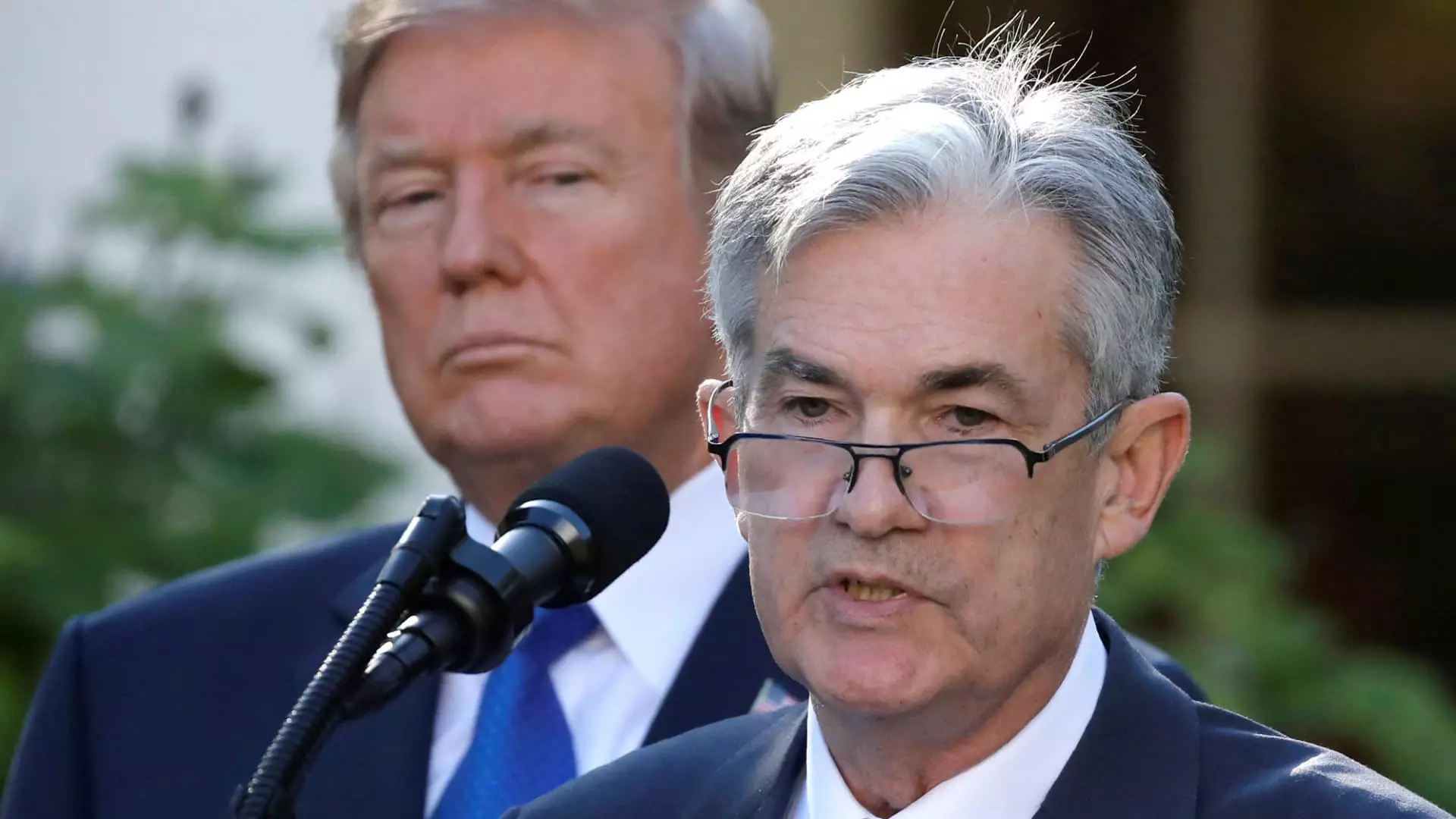The Federal Reserve, under the leadership of Chair Jerome Powell, finds itself in a precarious position as political pressure mounts, particularly from President Donald Trump. Despite the calls for change, the Fed is expected to maintain interest rates at their current levels following its recent two-day meeting. This inaction, while perhaps prudent in terms of long-term economic strategy, raises serious questions about the short-term implications for American consumers and businesses alike. The reluctance to adjust interest rates reflects a broader struggle within the institution—a tug-of-war between economic theory and real-world political pressures that ultimately shape the financial landscape for millions.
What is abundantly clear is the palpable frustration permeating through the nation as sky-high interest rates remain unchanged. Trump’s criticisms concerning the impact of the federal funds rate—essentially the cost for banks to borrow from one another—highlight the stark reality that consumers are grappling with a crippling cost of living. Businesses are stifled under stagnant wages and soaring borrowing costs, indicating a desperate need for the Fed to take bolder steps to stimulate economic growth.
The Ripple Effects of High Interest Rates
The ramifications of high interest rates extend far beyond the fiscal halls of the Federal Reserve. Everyday Americans are feeling the pinch as borrowing costs remain burdensome across various sectors, including credit cards, mortgages, and auto loans. The connection between the Fed’s interest rate decisions and the rates consumers see in their lives is not merely theoretical; it directly affects their financial health. With the average credit card APR hovering just over 20%, consumers are increasingly finding themselves trapped in a cycle of debt that is exacerbated by high inflation.
Matt Schulz, chief credit analyst at LendingTree, aptly points out the growing list of challenges stemming from a stagnant economic environment. Individuals, particularly those living paycheck to paycheck, have little buffer left to absorb these incessantly rising costs. While Schulz notes that consumers possess more power in negotiating interest rates than they believe, it is vital to recognize that many Americans lack options. The ongoing economic uncertainty necessitates immediate action—not just a waiting game for relief that may be many months away.
The Housing Market Quagmire
If there’s a sector that embodies the struggle between consumers’ dreams and financial reality, it is the housing market. Prospective homebuyers are caught in a web of high mortgage rates and dwindling inventory. With the average 30-year fixed-rate mortgage rate hovering around 6.9%, the dream of homeownership appears increasingly distant for many, particularly young couples and first-time buyers. The inability of the Fed to cut rates, and thus render borrowing easier, implies that the housing affordability crisis will likely continue to intensify as the summer buying season unfolds.
Schulz’s assertions that the difficult market conditions are unlikely to change soon highlight a dire backdrop where housing prices remain high, and purchasing power continues to diminish. For families seeking a new place to call home, the straightforward task of home shopping has become fraught with concern and anxiety. The Federation’s decision to remain on hold only deepens the frustrations of those trying to make what is often the largest financial investment of their lives.
The Auto Loan Challenge
Meanwhile, the auto industry is experiencing its own set of challenges, complicated further by soaring vehicle prices and a tight supply chain exacerbated by trade policies. The average rate on a five-year new car loan has reached 7.24%—a staggering figure for families struggling to justify the cost of reliable transportation. The situation becomes particularly dire as median car payments outpace the prices of both new and used vehicles, leaving many consumers with no choice but to stretch their budgets even thinner.
In a climate where car buyers are facing rising payments—as well as the threat of further tariff-induced price increases—it becomes clear that the financial landscape is dire. However, the silver lining lies in borrowing behaviors; consumers are urged to shop smartly for financing and possibly consolidate existing loans to lighten their burdens. That said, the sheer act of purchasing a vehicle has morphed into a strategic game rather than a straightforward transaction, revealing the complexity of today’s economic reality.
Student Loans and the Struggling Borrower
Turning to education financing, federal student loan rates are intricately tied to government policy rather than the whims of the Fed. Although current rates are relatively stable—averaging around 6.53% for undergraduates—many borrowers are facing a more insidious issue: a lack of forgiveness options and increased competition for funding as economic uncertainty looms large. The ramifications of such a financial environment put additional pressure on recent graduates, many of whom are already adjusting to a challenging labor market.
Nonetheless, it’s essential to appreciate the brighter side in savings accounts, where high-interest options still exist with rates just surpassing 4%. This benefit for savers serves as a beacon of hope and contrasts sharply with the burdens of borrowing. Although the Fed’s neutrality in these situations doesn’t directly correlate, it does offer a vital reminder that financial landscapes can fluctuate in ways that support both savers and borrowers, albeit in an unbalanced manner.
In this intricate dance of economic policy, consumer realities, and political pressures, one thing remains clear: the time for proactive, comprehensive strategies is now. The Fed’s hesitance could cost more than mere interest rate adjustments; it risks compromising the very stability of an already fragile economy.

